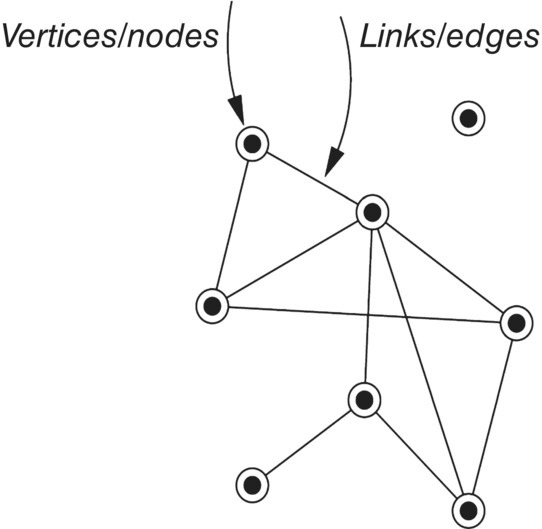14Complex Networks
14.1 Evolution Towards Large-Scale Networks
In general in this chapter we will consider a network as a set of elements, which we will call vertices or nodes, with connections between them, called edges or links. On its highest level of abstraction the network is presented in Figure 14.1.1.

Figure 14.1.1 Network model
In general with such a model we will represent Internet, the World Wide Web, social networks of acquaintances or other connections between individuals, organizational networks, and networks of business relations between companies, neural networks, metabolic networks, food webs, distribution networks such as blood vessels or postal delivery routes, networks of citations between papers, and many others. Traditionally the study of networks, in the form of mathematical graph theory, has been a main approach for long time. Recent years however have witnessed a substantial new movement in network research, with the focus shifting away from the analysis of single small graphs and the properties of individual vertices or edges within such graphs to a consideration of large-scale statistical properties of graphs. This new approach has been driven largely by the availability of computers and communication networks that allow us to gather and analyze data on a scale far larger than previously possible. Where studies used to look at networks of maybe tens ...
Get Advanced Wireless Networks, 3rd Edition now with the O’Reilly learning platform.
O’Reilly members experience books, live events, courses curated by job role, and more from O’Reilly and nearly 200 top publishers.

